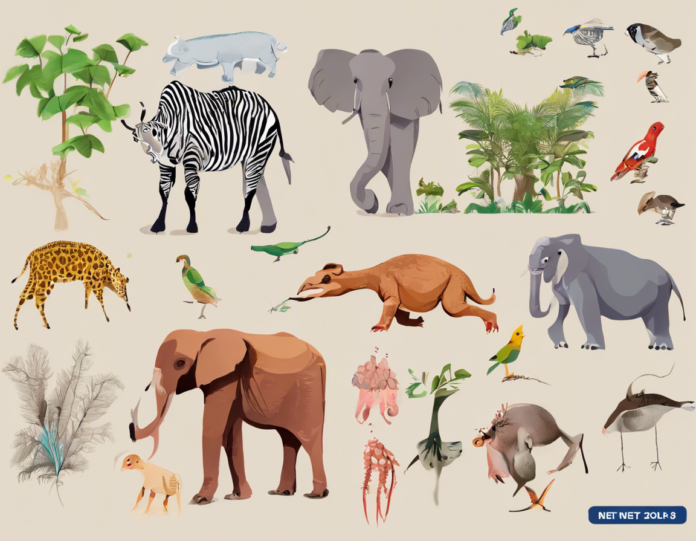Introduction
When studying NEET UG Zoology, having a strong foundation in the Diversity in the Living World is crucial. This section forms the basis for understanding the various life forms, their classification, and evolutionary relationships. In this guide, we will delve deep into the concepts of Diversity in the Living World in the context of the NEET UG Zoology syllabus.
The Importance of Understanding Diversity in the Living World
Diversity is the hallmark of life on Earth. It encompasses the wide array of organisms, from the smallest microorganisms to the largest mammals, each playing a unique role in the ecosystem. Understanding diversity allows us to appreciate the complexity and beauty of the natural world and provides insights into the evolutionary processes that have shaped life over millions of years.
Key Concepts in Diversity in the Living World
-
Taxonomy: Taxonomy is the science of classifying organisms based on their characteristics. It helps in organizing the vast diversity of life into manageable groups.
-
Biological Classification: Biological classification involves arranging organisms into hierarchical categories based on their shared characteristics. The categories include Domain, Kingdom, Phylum, Class, Order, Family, Genus, and Species.
-
Systematics: Systematics is the study of the evolutionary relationships between organisms. It aims to reconstruct the evolutionary history of life on Earth.
-
Nomenclature: Nomenclature refers to the system of naming organisms. Scientific names are based on binomial nomenclature, where each organism is given a unique two-part name (Genus species).
Understanding Taxonomic Categories
Domain: The highest taxonomic category, which includes three domains: Archaea, Bacteria, and Eukarya.
Kingdom: The second-highest taxonomic category, which includes groups of related phyla.
Phylum: A group of related classes.
Class: A group of related orders.
Order: A group of related families.
Family: A group of related genera.
Genus: A group of related species.
Species: The lowest taxonomic category, consisting of individuals that can interbreed and produce fertile offspring.
Evolutionary Relationships and Phylogenetic Trees
Phylogenetic Tree: A diagram that shows the evolutionary relationships between organisms. It is based on shared characteristics and genetic data.
Cladistics: A method of classification that groups organisms based on shared derived characteristics.
Homologous Structures: Structures that are similar in different organisms due to a common evolutionary origin.
Analogous Structures: Structures that are similar in function but have different evolutionary origins.
Frequently Asked Questions (FAQs)
-
What is the significance of studying Diversity in the Living World for the NEET UG exam?
Understanding diversity helps in answering questions related to taxonomy, biological classification, and evolutionary relationships, which are commonly tested in the NEET UG Zoology section. -
How can I memorize the various taxonomic categories effectively?
Creating mnemonics, flashcards, and practicing regularly through quizzes can help in memorizing the taxonomic categories efficiently. -
What are some common misconceptions about biological classification?
One common misconception is equating similar-looking organisms to be closely related. Biological classification is based on shared characteristics and evolutionary relationships, not just physical appearance. -
How does the concept of homologous structures support the theory of evolution?
Homologous structures provide evidence for common ancestry and evolutionary relationships. The similarities in structures such as the pentadactyl limb in vertebrates suggest a shared evolutionary history. -
Why is nomenclature important in Biology?
Nomenclature ensures that each organism has a unique, standardized name globally recognized by scientists. It eliminates confusion that may arise from using different common names for the same organism. -
Can organisms from different domains interbreed and produce fertile offspring?
No, organisms from different domains (e.g., Bacteria, Archaea, Eukarya) are evolutionarily distinct and cannot interbreed to produce fertile offspring.
In conclusion, a strong grasp of Diversity in the Living World is essential for excelling in the NEET UG Zoology section. By understanding the fundamental concepts of taxonomy, biological classification, and evolutionary relationships, aspiring medical students can enhance their knowledge of the vast array of life forms on Earth. Keep revising the key concepts and practicing sample questions to ace this crucial aspect of the NEET UG syllabus.
